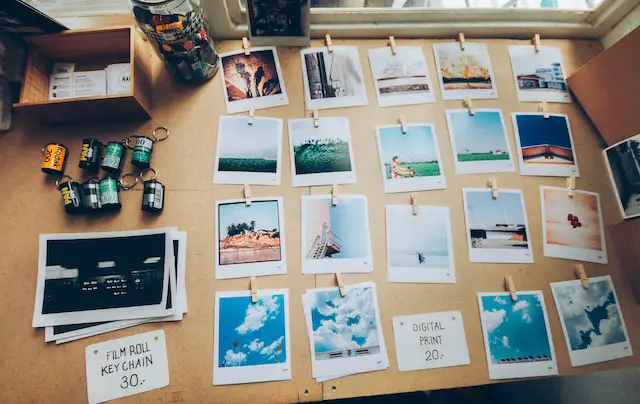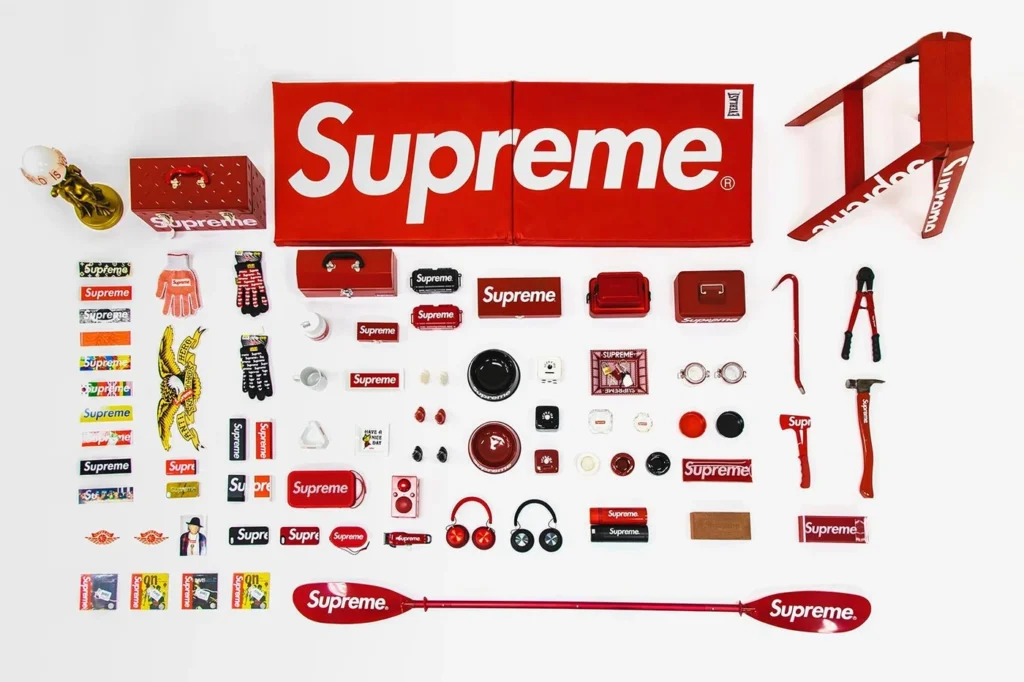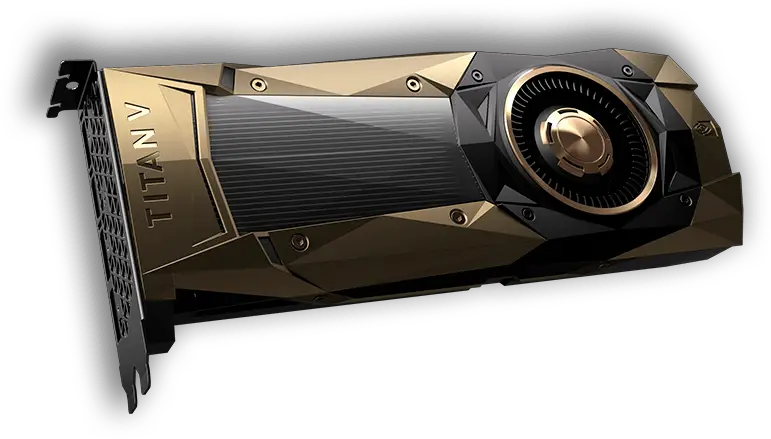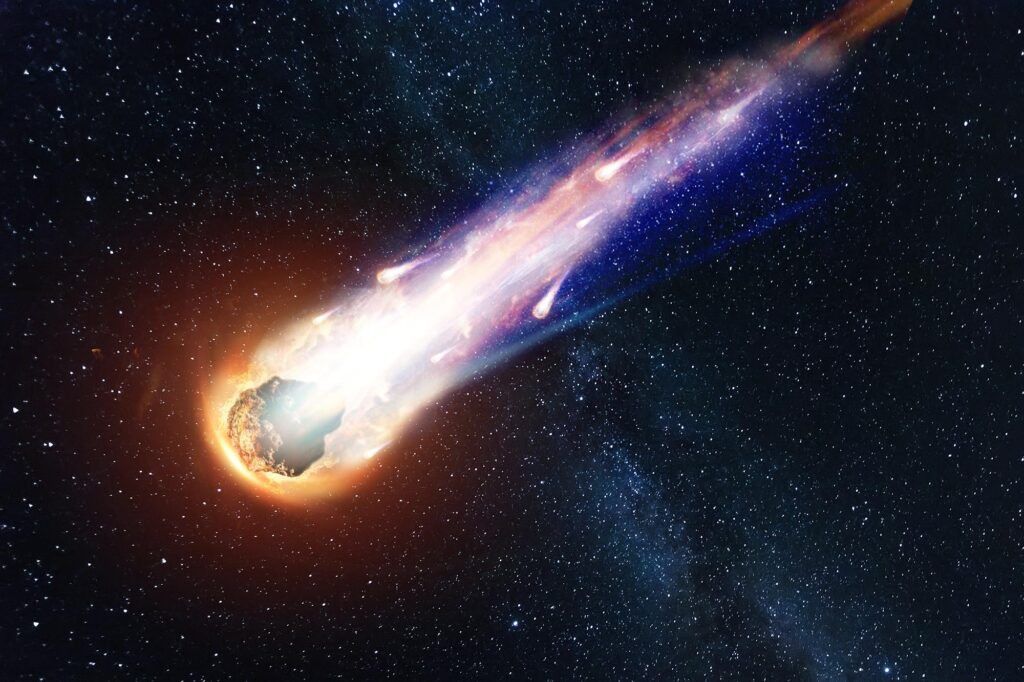In the captivating world of fine art and photography, there exists a rarefied realm where images transcend their mere visual form and become highly coveted treasures. These are the photographs that have captured the essence of a moment, evoked emotions, and made an indelible impact on the art world.
In this article, we embark on a journey through the lens of luxury and explore the 10 most expensive photographs in the world. From mesmerizing landscapes to iconic portraits, these extraordinary works of art have not only commanded staggering prices but have also left an enduring mark on the artistic legacy of our time.
Join us as we delve into the realm of photographic masterpieces, where creativity, craftsmanship, and storytelling converge to create breathtaking images that have captivated collectors and art enthusiasts across the globe.
10 Most Expensive Photographs In The World
| No | Most Expensive Photographs | Price |
| 1 | Le Violon d’Ingres (1924) | $12,400,000 |
| 2 | The Flatiron (1904) | $11,800,000 |
| 3 | Rhein II (1999) | $4,338,500 |
| 4 | Doge (2005) | $4,000,000 |
| 5 | Spiritual America (1981) |
$3,973,000
|
| 6 | Untitled #96 (1981) |
$3,890,500
|
| 7 | Untitled #93 (1981) | $3,861,000 |
| 8 | Twin Flames #49 NFT (2021) | $3,781,159 |
| 9 | To Her Majesty (1973) | $3,765,276 |
| 10 | Untitled (Cowboy) (1998) | $3,749,000 |
Le Violon d’Ingres (1924)
Le Violon d’Ingres (1924) is the most expensive Photograph in the world. “Le Violon d’Ingres,” a mesmerizing photograph created in 1924 by the legendary artist Man Ray. This iconic black-and-white image showcases a masterful blend of surrealism and classical portraiture, capturing the imagination with its striking visual composition.
In the photograph, the renowned model and muse, Kiki de Montparnasse, poses with her back turned to the camera. “Le Violon d’Ingres” is a testament to Man Ray’s artistic vision and his ability to seamlessly merge elements of reality and fantasy, leaving viewers spellbound by its allure and inviting them to delve into the depths of imagination and artistic expression.
The Flatiron (1904)
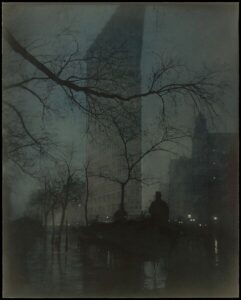
The Flatiron (1904) is the 2nd most expensive Photograph in the world. “The Flatiron,” a timeless photograph captured in 1904 by the pioneering photographer Edward Steichen. This iconic image portrays the majestic Flatiron Building, an architectural marvel located in New York City.
With its unique triangular shape and grandeur, the building stands tall against the backdrop of a bustling cityscape. Steichen’s masterful composition skillfully captures the essence of urban life, showcasing the convergence of technology, progress, and human activity. Its enduring appeal lies not only in its visual beauty but also in its ability to transport viewers to a bygone era, evoking a sense of nostalgia and wonder.
As we gaze upon this remarkable photograph, we are reminded of the power of art to preserve and celebrate the extraordinary moments that define our shared human experience.
Rhein II (1999)
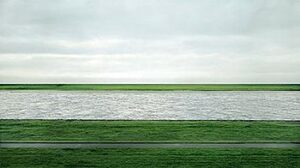
Rhein II (1999) is the 3rd most expensive Photograph in the world. Let me introduce you to “Rhein II,” a groundbreaking photograph created in 1999 by German artist Andreas Gursky. This visually striking image presents a minimalist landscape that captures the serene and expansive beauty of the Rhine River.
Through meticulous composition and digital manipulation, Gursky strips away any extraneous elements, leaving behind a seemingly pristine scene characterized by a grey sky, a narrow strip of grass, and the flowing river. The removal of human presence and the reduction of the landscape to its simplest form create a meditative and abstract aesthetic.
“Rhein II” challenges conventional notions of photography by pushing the boundaries of representation, inviting viewers to contemplate the relationship between nature, art, and our perception of reality. With its record-breaking sale price in 2011, “Rhein II” has secured its place as not only an influential artwork but also a symbol of the ever-evolving nature of the art market and the profound impact that a single photograph can have on the art world.
Doge (2005)

Doge (2005) is the 4th most expensive Photograph in the world. The endearing and internet-famous Doge, an image that originated in 2005 and quickly became an iconic meme. The Doge image features an adorable Shiba Inu dog with a quizzical expression, surrounded by colorful comic sans text in broken English. This lovable canine captured the hearts of millions online, spawning a viral sensation that swept across social media platforms.
The Doge meme’s appeal lies in its humorous and relatable nature, with captions typically featuring phrases like “such wow” or “very [adjective].” This quirky and light-hearted meme embodies the internet’s playful and often nonsensical culture, transcending language barriers and generating a sense of camaraderie and amusement among online communities.
Even though it originated over a decade ago, the Doge meme continues to bring smiles to faces and is an enduring symbol of the internet’s ability to transform everyday images into beloved pop culture phenomena.
Spiritual America (1981)
Spiritual America (1981) is the 5th most expensive Photograph in the world. “Spiritual America,” a thought-provoking photograph captured in 1981 by the renowned American artist Richard Prince. This powerful image features a reproduction of a photograph of a young Brooke Shields, originally taken by Gary Gross in 1975 when she was just ten years old.
By appropriating and recontextualizing the original image, Prince forces viewers to confront uncomfortable questions about the commodification of youth and the influence of media in shaping our perceptions of beauty, identity, and morality.
Untitled #96 (1981)
Untitled #96 (1981) is the 6th most expensive Photograph in the world. “Untitled #96,” a captivating photograph created in 1981 by the renowned American artist Cindy Sherman. Part of her influential “Untitled Film Stills” series, this particular image portrays Sherman herself, adopting a character reminiscent of the classic film noir era. Through her masterful use of composition, lighting, and costuming, Sherman transports viewers to a cinematic world.
“Untitled #96” encapsulates Sherman’s exploration of identity, gender, and the complex relationship between the viewer and the image. This photograph serves as a testament to Sherman’s artistic vision and her significant contribution to contemporary art, prompting discussions about the role of women, popular culture, and the nature of self-expression.
Untitled #93 (1981)
Untitled #93 (1981) is the 7th most expensive Photograph in the world. “Untitled #93,” a captivating photograph created in 1981 by the renowned artist Cindy Sherman. As part of her iconic “Untitled Film Stills” series, this particular image showcases Sherman’s extraordinary ability to transform herself into different characters, blurring the boundaries between reality and fiction.
Through her use of composition, lighting, and meticulous attention to detail, Sherman invites viewers to delve into the narrative possibilities and psychological depths of the scene. This photograph embodies Sherman’s exploration of gender, identity, and the influence of mass media on our perceptions of femininity. As viewers engage with “Untitled #93,” they are confronted with questions about the construction of identity and the often-complicated nature of representation.
Twin Flames #49 NFT (2021)
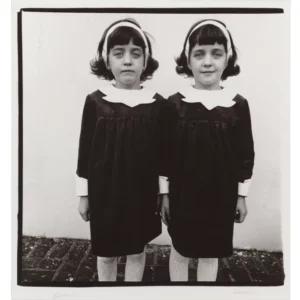
Twin Flames #49 NFT (2021) is the 8th most expensive Photograph in the world. Let me introduce you to “Twin Flames,” a mesmerizing digital artwork and NFT (Non-Fungible Token) that emerged in 2021 as a groundbreaking creation by an innovative artist. This NFT, identified as #49 in its series, captures the essence of a profound and mystical connection between two souls.
“Twin Flames” draws viewers into a vibrant and ethereal world where vibrant colors blend harmoniously, representing the intertwining energies of these soulful counterparts. The digital medium allows for a seamless interplay of light, movement, and symbolism, creating an immersive experience that transcends traditional artistic boundaries.
As an NFT, “Twin Flames” carries the unique advantage of being verifiably authentic, rare, and indivisible, adding a layer of value and exclusivity to the artwork. Through its captivating beauty and exploration of spiritual themes, “Twin Flames” exemplifies the limitless possibilities of the digital art realm and continues to captivate both art enthusiasts and collectors alike in the ever-evolving landscape of NFTs.
To Her Majesty (1973)
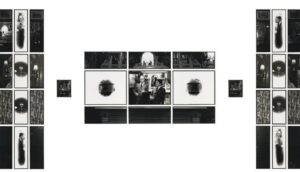
To Her Majesty (1973) is the 9th most expensive Photograph in the world. “To Her Majesty” by Gilbert & George is indeed a significant artwork, and it holds the distinction of being sold for $3,767,960 at Christie’s auction in London, UK, on June 30, 2008.
Gilbert Prousch and George Passmore, collectively known as Gilbert & George, are renowned British artists known for their “Art for All” approach, which aims to make art accessible to a wide audience. They have worked across various media, including photography, sculpture, and performance art.
“To Her Majesty” is part of their picture series, which reflects their signature style and explores themes of society, identity, and cultural commentary. The popularity and impact of Gilbert & George’s work have solidified their place in the art world, particularly within the context of British contemporary art.
Untitled (Cowboy) (1998)
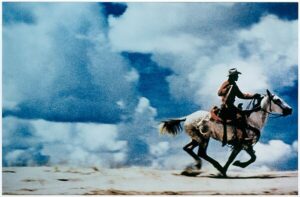
Untitled (Cowboy) (1998) is the 10th most expensive Photograph in the world. “Untitled (Cowboy),” a captivating photograph created in 1998 by the renowned American artist Richard Prince. This iconic image features a lone cowboy astride a majestic horse, set against a vast, sweeping landscape.
With its powerful symbolism and visually striking presentation, “Untitled (Cowboy)” continues to captivate audiences, sparking dialogue about the complex intersections of art, popular culture, and the enduring myths that shape our collective imagination.
Frequently Asked Questions
What is a photograph?
A photograph is a visual representation or image captured using a camera or other photographic equipment. It is created by the process of exposing photosensitive material, such as film or a digital sensor, to light. This exposure captures the light and forms an image that reflects the scene or subject being photographed.
Photographs can depict a wide range of subjects, including people, landscapes, objects, events, and more. They serve as a means of documenting and preserving moments in time, conveying emotions, telling stories, and capturing the beauty and diversity of the world around us.
Photographs can be black and white or in color, and they can be printed, displayed digitally, or shared through various media platforms. With the advancements in technology, photography has become more accessible and prevalent, allowing people to express their creativity and communicate visually in a profound and impactful way.
When was the first photograph taken?
The first recognized photograph, known as “View from the Window at Le Gras,” was taken by Joseph Nicéphore Niépce in 1826 or 1827. Niépce used a process known as heliography to create the photograph. The image was captured on a pewter plate coated with bitumen of Judea, a light-sensitive substance.
The exposure time required was several hours, resulting in a faint image of the view from Niépce’s window. This early photograph marked a significant milestone in the development of photography and paved the way for further advancements in the field.
Who invented the photograph?
The invention of photography is a culmination of contributions made by several individuals over time. However, the creation of the first permanent photograph is attributed to Joseph Nicéphore Niépce, a French inventor.
In 1826 or 1827, Niépce successfully captured the first known photograph, titled “View from the Window at Le Gras.” He used a process called heliography, which involved exposing a coated pewter plate to light to create the image. Niépce’s work laid the foundation for the development of photography as we know it today.
Notable figures such as Louis Daguerre, William Henry Fox Talbot, and others further advanced the field, refining techniques and inventing new processes that contributed to the rapid evolution and popularization of photography in the years that followed.
How to photograph the moon?
Photographing the moon can be an exciting and rewarding experience. Here are some steps to help you capture beautiful images of the moon:
1. Use the Right Equipment: A camera with manual settings will give you the most control over the exposure. A telephoto lens or a lens with a long focal length will help you capture more details of the moon. A sturdy tripod is essential to keep your camera steady during long exposures.
2. Choose the Right Time: The best time to photograph the moon is during the night when the moon is visible and well-lit. Check the lunar calendar to find out when the moon is in its phase of interest, such as a full moon or crescent moon.
3. Location and Composition: Consider the foreground elements you want to include in your photograph to create a visually appealing composition. This could be buildings, trees, or any other subject that adds interest to your image.
4. Manual Mode and Settings: Switch your camera to manual mode to have full control over the settings. Set your ISO to a low value (around 100-400) to minimize noise. Use a narrow aperture (high f/number, such as f/8 or higher) to ensure a larger depth of field. Start with a shutter speed of around 1/125th of a second and adjust as needed based on the moon’s brightness.
5. Focus: Switch to manual focus and set your lens to infinity. If needed, use Live View and magnify the moon on your camera’s LCD screen to achieve precise focus.
6. Exposure Bracketing: Experiment with exposure bracketing by taking multiple shots at different exposures. This can help you capture a range of details and ensure you get the best exposure for the moon.
7. Use a Remote Shutter Release: To minimize camera shake, use a remote shutter release or your camera’s self-timer to trigger the shutter without physically touching the camera.
8. Post-Processing: After capturing your images, use photo editing software to enhance the final results. Adjust the exposure, contrast, and sharpness to bring out the details of the moon.
Remember, practice makes perfect. Experiment with different settings and techniques to find what works best for you. Enjoy the process of capturing the beauty of the moon and let your creativity guide you.
How to photograph the milky way?
Photographing the Milky Way can be a thrilling and awe-inspiring experience. Here are some steps to help you capture stunning images of our galaxy:
1. Find a Dark Location: Look for a location away from light pollution, such as rural areas or national parks, where the night sky is darker and the Milky Way is more visible.
2. Timing and Moon Phase: Check the moon phase and choose a night when the moon is not too bright or not present at all. A moonless or low-moon phase night will allow the Milky Way to shine brighter in the sky.
3. Plan Your Shoot: Use smartphone apps or websites that provide information about the position and visibility of the Milky Way at your chosen location and time. This will help you determine the best time to capture the Milky Way.
4. Use the Right Equipment: A camera with manual settings, preferably one that performs well at high ISOs, will allow you to have more control over your shots. A wide-angle lens with a low aperture (e.g., f/2.8 or lower) will capture more light and a larger portion of the sky. A sturdy tripod is essential for stability during long exposures.
5. Set Up Your Camera: Mount your camera on a tripod and set it to manual mode. Use a high ISO setting (e.g., ISO 1600 or higher) to capture the faint light of the stars. Set the lens to manual focus and adjust it to infinity or use a distant light source to help you achieve sharp focus.
6. Composition: Consider including interesting foreground elements such as landscapes, trees, or structures to add depth and visual interest to your Milky Way shots.
7. Long Exposures: Experiment with different exposure times, typically ranging from 15 to 30 seconds or even longer, to capture enough light from the stars and the Milky Way. Be mindful of the Earth’s rotation, as longer exposures can result in star trails.
8. Experiment and Review: Take multiple shots using different settings and compositions to increase your chances of capturing the Milky Way in its full glory. Review your images on the camera’s LCD screen to make any necessary adjustments.
9. Post-Processing: Use photo editing software to enhance your Milky Way images. Adjust the exposure, contrast, white balance, and noise reduction to bring out the details and colors of the stars and the Milky Way.
Remember to dress appropriately for the weather conditions and bring extra batteries and memory cards for extended shooting sessions. Be patient, as capturing the Milky Way requires time, practice, and a bit of luck with weather conditions. Enjoy the experience of photographing the wonders of our galaxy and let your creativity guide you.

